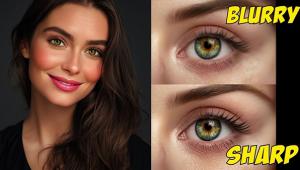Digital Help
Q&A For Digital Photography Page 2
More On The Epson R2400, And Whether To Purchase
Q. I read your recent review on the R2400 and it was very informative. I have
an Epson 2200 and an R1800 printer. I use the R1800 for gloss and satin only
and the 2200 for matte and fine art. I am trying to decide whether or not to
buy the R2400 to replace my 2200. The obvious incentive would be faster print
times and better shadow detail. In all the reviews I can get my hands on I see
the R2400 being compared to the 2200 in terms of luster, satin, and glossy prints
and of course black and white prints. My question for you is: In your personal
judgment is the difference in matte and fine art prints done on the R2400 that
much superior to those done on the 2200? Does the extra resolution and K3 prints
on the R2400 really stand out compared to the 2200 prints? I do not want to
shell out $850 on a replacement printer if the improvements can only be seen
with a loupe or under the right lighting. I print portraits and florals from
images taken on my Nikon D2X. A lot of reviewers claim that anyone owning a
2200 may not want to rush out and buy the R2400 but in your review you claim
the opposite. I would welcome your comments. I thought your review was very
good.
Lee Reichel
A. I base most of my testing on using the best 100 percent
rag fiber-matte papers I can lay my hands on. If it helps at all I never bought
a 2200 for my own use, but I have committed to and am purchasing the R2400 as
soon as I receive an invoice.
My criteria, relative to printing on high-performance fine art paper, includes
the measured D-max the printer will reproduce without over-inking and bronzing.
I also test to see if it reproduces the entire color palette in photographic
images with rich depth, and does it do so accurately in relation to the image
on screen.
However, I must admit that part of my justification for purchasing the R2400
is the fact it will print very high-quality black and white images.
Overall, as to color quality, the R2400 is even a shade better than the R1800,
as far as I am concerned. In terms of color intensity and accuracy, the R1800
is much better than the 2200, particularly in reproducing skin tones and the
greens in foliage. And finally, I found that even when reproducing more intense
color, the R2400 uses less ink than both the R1800 and 2200.
The Perennial Controversy, PC Or Mac
Q. I am contemplating buying a new computer. Besides using Photoshop CS2, I
do not use the computer for anything special (I do word processing and use the
web, but I do not download music and I am not making videos). Could you advise
on the need to buy a computer with a dual-core microprocessor and/or Hyper-Threading
(advertised as useful for some software)? The only mention I read is that dual
core might become necessary for the forthcoming Windows versions. DVD LightScribe
is another mystery.
Sergiu Luculescu
A. For anyone seriously interested in using a computer for
photography I do not recommend purchasing a Windows PC. Although off-the-shelf
PCs for home/office use have gotten very inexpensive, a PC, even a Dell Precision
470 or M20 that is suitable for digital photography computing, is $1700-$1900
without monitor.
So, in today's market you can do better in terms of graphic performance
with a basic G5 Apple Mac, or even an iMac or Mac mini, for that matter. Apple
has 80-85 percent of the professional graphic market, and for good reason. It
works much better and easier.
For my work I use three Apple Macs and have one IBM graphic workstation with
Windows XP Pro. The PC is rarely used, only when I have to work with Windows-only
software.
- Log in or register to post comments


































